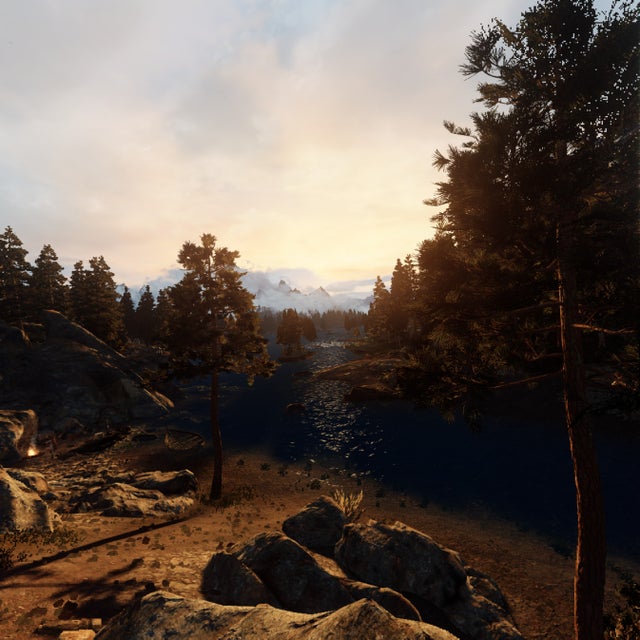One way to increase your Rust fps is to make sure that you are running the game in fullscreen mode. This can be done by opening the graphics settings from the main menu and then selecting the “Fullscreen” option. Additionally, you can try to lower the game’s resolution, as this can also help to improve performance.
If you are still having issues with low fps, there are a number of other things that you can try, such as updating your drivers or closing any background programs that may be affecting performance.
🔧 RUST: Dramatically increase performance / FPS with any setup! {2018} Lag / FPS drop fix
- Update your graphics drivers One of the most common ways to improve Rust performance is by updating your graphics drivers
- If you’re not running the latest version, you may be missing out on important optimizations that could increase your FPS
- Optimize your in-game settings Another way to eke out some extra performance is by optimizing your in-game settings
- This will vary depending on what kind of hardware you have, but there are a few general tips that can help: Turn down shadows and anti-aliasing if possible Reduce the resolution Enable “Fancy Blending” in the Advanced Video Settings menu 3
- Close unnecessary programs Having too many programs open in the background can tax your system and cause Rust to run more slowly
- If you’re not using a program, close it to free up resources for Rust
- Add more RAM Adding more random access memory (RAM) can also help increase Rust performance
- This is becauseRust can use all available RAM for caching purposes, which can speed up loading times and reduce lag spikes during gameplay
- If you have a desktop computer, upgrading your RAM is relatively inexpensive and easy to do yourself
Rust Fps Boost
FPS stands for “frames per second,” and it’s a key indicator of how well your computer can run a video game. The higher the FPS, the better. If you’re looking to boost your Rust FPS, there are a few things you can do.
First, make sure you’re running the game in Direct X 11 mode. You can do this by opening the console and typing “Graphics.RendererSettings” followed by the Enter key. Look for the “DirectXVersion” setting and change it to “11”.
This will ensure that you’re getting the most out of your graphics card.
Next, take a look at your in-game settings and adjust them accordingly. Turn down the resolution and graphical details if need be.
This will help improve your framerate without sacrificing too much visual quality.
Finally, close any applications that might be running in the background while you’re playing Rust. This includes web browsers, media players, chat clients, etc.
These can all hog resources and cause performance issues.
By following these simple tips, you should see a nice increase in your Rust FPS. Enjoy!

Credit: www.youtube.com
How Do I Make My Fps Higher in Rust?
If you’re looking to increase your FPS in Rust, there are a few things you can do. First, make sure that you’re running the game in DirectX 9 mode. You can do this by opening the game’s settings and selecting “DirectX 9” from the “Graphics API” drop-down menu.
Doing this will usually boost your FPS by a significant amount.
Another thing you can do is enable the “Hardware PBO” setting in the game’s graphics settings. This will improve performance on systems with integrated GPUs.
Finally, if you’re still not getting the performance you want, try lowering some of the game’s graphical settings. This won’t always increase your FPS, but it’s worth a shot if nothing else seems to be working.
How Do I Make Rust Run Better on Low End Pc?
There are a few things you can do to make Rust run better on low end PC. First, try to lower the graphics settings. This can be done by opening the game’s options menu and selecting “Graphics Settings.”
From here, you can experiment with different settings to see what works best for your computer. If you’re still having performance issues, you might want to try running the game in DirectX 9 mode. This can be done by adding the “-DX9” launch option in your Steam library.
Lastly, consider using a FPS booster like LowSpecGamer’s AutoLowSettings mod. This mod automatically lowers your graphics settings when your framerate drops below a certain threshold, which can help improve performance without sacrificing too much visual quality.
How Much Fps Do You Need for Rust?
Rust is a survival game that was released in 2013. It’s an online multiplayer game with a lot of players, and it can be tough to get by without a good framerate. But how much FPS do you really need for Rust?
The answer may vary depending on the person, but generally speaking, you should aim for at least 60 FPS for Rust. This will ensure that you have a smooth experience and won’t be lagging behind other players. Anything lower than 60 FPS may start to feel choppy and make it more difficult to play the game.
Of course, if you’re looking for the absolute best performance, then you’ll want to aim for higher than 60 FPS. But even if you can’t reach that number, don’t worry too much – as long as you’re above 60, you should be fine.
Why is My Rust So Laggy?
One of the most common complaints about Rust is that it can be quite laggy. There are a few reasons why this might be the case:
1. Your internet connection may not be good enough to support Rust.
The game requires a lot of bandwidth and if you’re on a slow or unreliable connection, that can definitely lead to performance issues. If possible, try connecting to a different server or using a wired connection instead of WiFi.
2. Your computer may not meet the minimum system requirements for Rust.
The game is quite demanding and even if your PC was able to run it when you first installed it, that doesn’t mean it will still be able to do so after months (or even years) of use and updates. Make sure you check the requirements on the official website before playing.
3. You could also have too many programs running in the background while trying to play Rust which can hog up resources and cause lag.
Close any applications you’re not using before launching the game.
4. It’s also possible that there’s something wrong with your installation of Rust itself which is causing performance problems. Try uninstalling and reinstalling the game to see if that helps at all.
5. Finally, keep in mind thatRust is still in Early Access which means it’s not fully optimized yet and there will likely always be some degree of lag present while playing (especially during large multiplayer battles). Just try to have patience and understand that things will hopefully improve as development continues!
Conclusion
In this blog post, the author provides tips on how to increase your Rust FPS for 2018. They recommend turning off shadows, disabling anti-aliasing, and adjusting your graphics settings. Additionally, they suggest playing on a server with lower ping and fewer players.
- Test Post 2022-12-09 - February 14, 2024
- How to Run in Pokemmo - February 13, 2024
- How Much is My Lol Account - February 13, 2024


